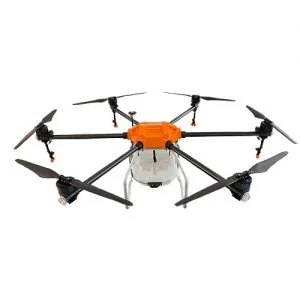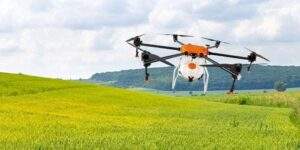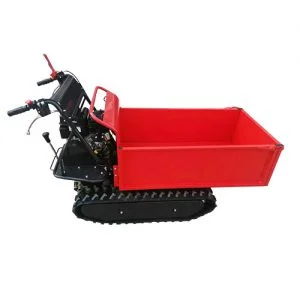Revolutionizing Farming: The Impact of Drones for Agriculture
Introduction
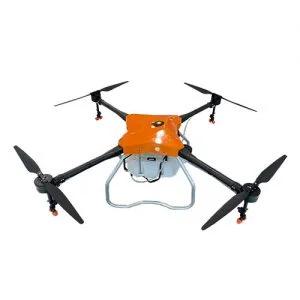
Drones, once synonymous with military operations and aerial photography, have found revolutionary applications in agriculture. Drone technology has transformed farming practices by offering farmers unprecedented insights into crop health, soil conditions, and overall farm management. This blog explores the diverse applications, benefits, challenges, and future prospects of drones in agriculture, highlighting their role in enhancing productivity, sustainability, and efficiency on modern farms.
Understanding Drones for Agriculture
What are Drones for Agriculture?
Drones for agriculture, also known as agricultural drones or ag-drones, are unmanned aerial vehicles (UAVs) equipped with specialized sensors, cameras, and data analytics software. These drones are used to monitor crops, assess field conditions, and make data-driven decisions to optimize farming practices.
Features of Drones for Agriculture:
- Multispectral and Thermal Imaging: Captures detailed imagery of crop health and stress.
- GPS and Autopilot Systems: Enables precise navigation and autonomous flight paths.
- Data Analytics Software: Analyzes collected data for insights on crop management.
- Payload Capacity: Carries sensors, cameras, and other equipment for various agricultural tasks.
Table: Features of Drones for Agriculture
| Feature | Description |
|---|---|
| Multispectral and Thermal Imaging | Captures detailed crop health and stress imagery |
| GPS and Autopilot Systems | Enables precise navigation and autonomous flights |
| Data Analytics Software | Analyzes data for insights on crop management |
| Payload Capacity | Carries sensors, cameras, and other equipment |
Benefits of Drones for Agriculture
Precision Agriculture
Drones enable precision agriculture by providing real-time, high-resolution data on crop health, nutrient levels, and water usage. This data helps farmers optimize inputs such as fertilizers and pesticides, leading to improved yield and resource efficiency.
Early Detection of Crop Diseases and Pests
Through multispectral imaging, drones can detect early signs of crop diseases, pest infestations, and nutrient deficiencies. Early intervention based on drone-collected data prevents yield loss and reduces the need for broad-spectrum treatments.
Efficient Field Management
Drones facilitate efficient field management by mapping fields, monitoring crop growth patterns, and identifying areas requiring attention. Farmers can create precise application maps for seeding, spraying, and irrigation, minimizing overlap and waste.
Cost and Time Savings
By automating repetitive tasks such as crop scouting and mapping, drones save farmers valuable time and reduce labor costs. They also enable timely decision-making, allowing farmers to respond promptly to changing field conditions.
Environmental Benefits
The use of drones in agriculture promotes environmental sustainability by reducing chemical usage, minimizing runoff, and optimizing water usage. Precision application techniques supported by drone data contribute to eco-friendly farming practices.
Table: Benefits of Drones for Agriculture
| Benefit | Description |
|---|---|
| Precision Agriculture | Optimizes inputs and improves resource efficiency |
| Early Detection of Crop Issues | Identifies diseases, pests, and nutrient deficiencies |
| Efficient Field Management | Maps fields and creates precise application maps |
| Cost and Time Savings | Automates tasks and facilitates timely decisions |
| Environmental Benefits | Reduces chemical usage and promotes sustainability |
Challenges of Implementing Drone Technology in Agriculture
Regulatory Compliance
Navigating regulations and obtaining necessary permits for drone operations can be complex and varies across regions. Compliance with airspace regulations and privacy laws is crucial for legal drone use in agriculture.
Initial Investment Costs
The upfront costs of purchasing drones, sensors, and data analytics software may be prohibitive for small-scale farmers. However, cost-benefit analyses often demonstrate significant long-term savings and productivity gains.
Technical Complexity
Operating agricultural drones requires training and technical expertise. Farmers need to understand flight controls, data interpretation, and maintenance procedures to effectively integrate drone technology into farm operations.
Data Management and Integration
Managing large volumes of drone-collected data and integrating it with existing farm management systems can pose challenges. Farmers must invest in data storage solutions and analytics tools to derive actionable insights from drone data.
Weather and Environmental Conditions
Adverse weather conditions such as strong winds, rain, and low visibility can affect drone operations and data accuracy. Drones may have limited flight windows, particularly in unpredictable climates.
Table : Challenges of Implementing Drone Technology in Agriculture
| Challenge | Description |
|---|---|
| Regulatory Compliance | Navigating airspace regulations and privacy laws |
| Initial Investment Costs | Upfront expenses for drones, sensors, and software |
| Technical Complexity | Training and expertise required for drone operations |
| Data Management and Integration | Handling and analyzing large volumes of drone data |
| Weather and Environmental Conditions | Impact of adverse weather on drone operations |
Future Trends and Innovations in Agricultural Drones
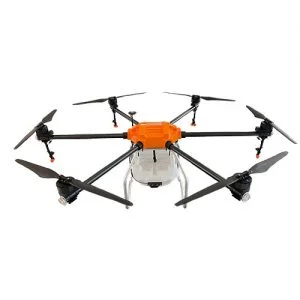
Advancements in Sensor Technology
Continued advancements in multispectral, hyperspectral, and LiDAR sensors enhance the precision and accuracy of drone-collected data for agriculture.
Integration of Artificial Intelligence (AI)
AI-powered analytics platforms will enable drones to autonomously identify crop issues, recommend actions, and optimize farming strategies in real-time.
Swarm Technology
Developments in swarm technology allow multiple drones to collaborate and cover larger areas efficiently, accelerating data collection and field management tasks.
Improved Battery Life and Durability
Enhancements in battery technology and drone design increase flight endurance and durability, extending operational capabilities in challenging agricultural environments.
Blockchain for Supply Chain Transparency
Blockchain technology paired with drone data provides transparent and traceable records of crop production, supporting food safety and supply chain integrity.
Table : Future Trends and Innovations in Agricultural Drones
| Trend | Description |
|---|---|
| Advancements in Sensor Technology | Enhances precision and accuracy of drone-collected data |
| Integration of Artificial Intelligence | AI-driven analytics for real-time farming decisions |
| Swarm Technology | Collaborative drones for efficient data collection |
| Improved Battery Life and Durability | Extended flight endurance in agricultural settings |
| Blockchain for Supply Chain Transparency | Traceable records for food safety and supply chain integrity |
Conclusion
Drones are transforming agriculture by revolutionizing how farmers monitor, manage, and optimize crop production. From precision agriculture and early pest detection to cost savings and environmental sustainability, drones offer numerous benefits that enhance farm productivity and efficiency. While challenges such as regulatory compliance and initial costs exist, ongoing technological advancements promise to further integrate drones into mainstream agricultural practices. Embracing drone technology allows farmers to adopt sustainable and data-driven approaches, paving the way for a more resilient and productive agricultural sector.
FAQ
What are agricultural drones?
Agricultural drones are unmanned aerial vehicles equipped with sensors and cameras for monitoring crops, assessing field conditions, and optimizing farming practices.
How do drones benefit agriculture?
Drones benefit agriculture by enabling precision farming, early detection of crop issues, efficient field management, cost savings, and environmental sustainability through data-driven decision-making.
What are the challenges of using drones in agriculture?
Challenges include regulatory compliance, initial investment costs, technical complexity, data management, and weather-related limitations affecting drone operations.
How can drones revolutionize farming practices?
Drones revolutionize farming by providing real-time data insights that optimize crop management, reduce resource wastage, and enhance overall farm productivity and sustainability.
What future trends are expected in agricultural drones?
Future trends include advancements in sensor technology, integration of AI for autonomous decision-making, swarm technology for efficient data collection, improved battery life, durability, and blockchain for supply chain transparency.

